To the average commoner, the ancient sport of jousting is not for the faint of heart. However, the medieval art of charging towards another horse and rider while balancing a lance on one arm and wrestling with half-a-bodyweight of armour is just a normal weekend for Queensland couple Tony and Elizabeth Hodges.
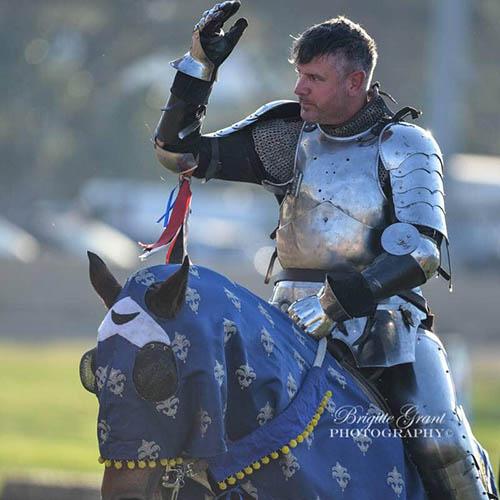
Even in the 21st century, chivalry isn’t dead, and Australia is home to some of the best modern-day knights in the world. With only a handful of jousters in each state, it’s not often that a new contender emerges to test their mettle – and their metal! But when Tony Hodges saw a jousting demonstration at a competition in 2014, he decided he had to take up the challenge.
“I thought it looked like fun,” says Tony. “I touched base with one of the guys that was there, and he said come and have a go. I went from my first tryout to my first public joust in about four days. It made it a lot easier that I could already ride.”
With a firm foundation built on pony club, dressage, and eventing competitions, Tony found that jousting was an incredibly challenging yet rewarding way to spend his time in the saddle. As his jousting began to grow, he started travelling to tournaments from his home in Victoria. But it wasn’t until two years later when Tony reached out to a complete stranger over Facebook to see if he could borrow one of her prized Waler horses for a medieval festival in Queensland that he met his future wife, Elizabeth.
“I was in Victoria at the time and I got invited to joust at a tournament in Caboolture,” explains Tony. “I could’ve dragged a horse up the coast with me but I had seen what Liz had done with the Light Horse on Facebook and I thought she could probably train a horse or two, so I reached out.”
With no previous experience in the medieval equestrian world, Elizabeth was unsure of what she would find when this so-called knight in shining armour turned up on her doorstep.
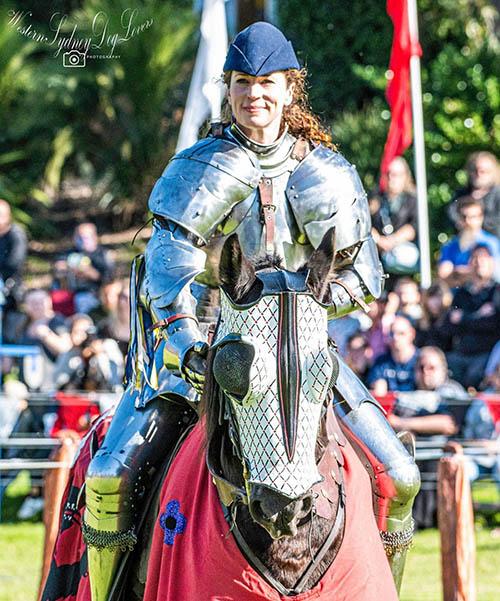
‘TWIT IN TINFOIL’
“I actually thought when he told me he was a knight that he would be a twit in tinfoil instead,” laughs Elizabeth. “He had to prove to me that he had earned that title before I believed it. I put him on a couple of tricky horses to put him through his paces first and see how he could ride. I have a little Waler mare, Gunner, who Tony rode first and I thought if she trusts him then he must be okay.”
“It was an interesting day, let me tell you,” agrees Tony.
Before meeting Tony, Elizabeth had developed a passion for Waler horses and had become involved with her local Light Horse group, using the traditional breed for parades and competitions such as tent pegging. But after the pair joined forces, Elizabeth soon took the plunge and had her own whack at the medieval competition.
“I started off by just supporting him on the field because I didn’t want my horses out of my sight,” says Elizabeth. “I squired for him, which is almost the medieval version of a groom. Then during a trip to America when Tony was invited to ride at a tournament, I hopped on during training and the World Champion in America started teaching me and encouraged me to give it a go.”
Tony admits that he was surprised when Elizabeth told him she wanted to do it. “We spent a lot of time training. Like any couple, we have our moments but it’s an amazing way to settle disputes!” Tony laughs. “It is very special that we can do it together.”
Elizabeth agrees: “I love working with him as a team. And as a woman, it’s a real sense of equality and respect with each other that we can do this together and support each other the way we do — but then also compete with and against each other. It’s really important for me to have that connection.”
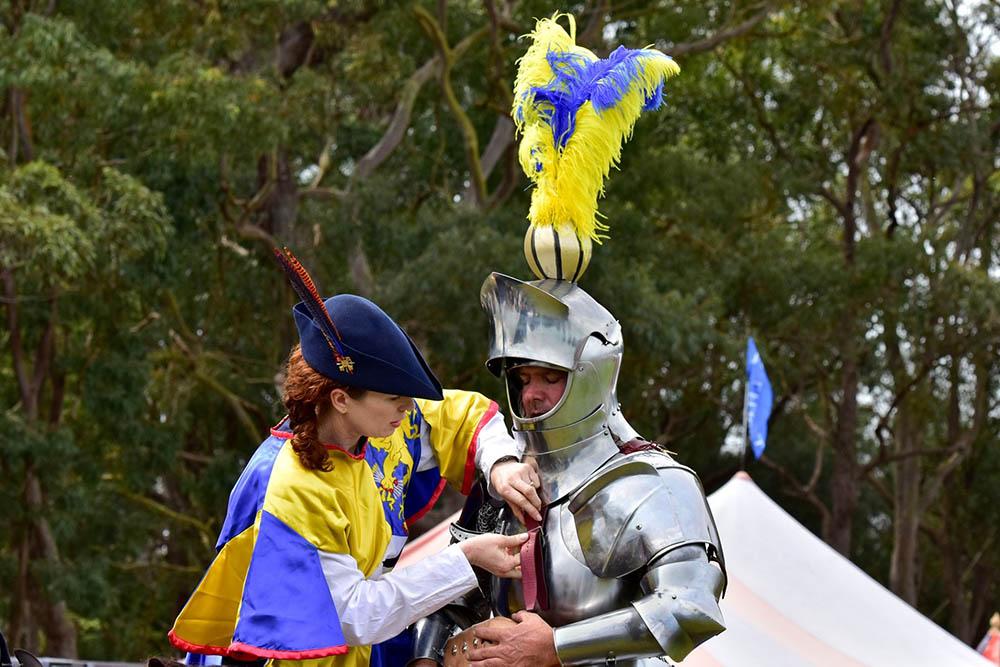
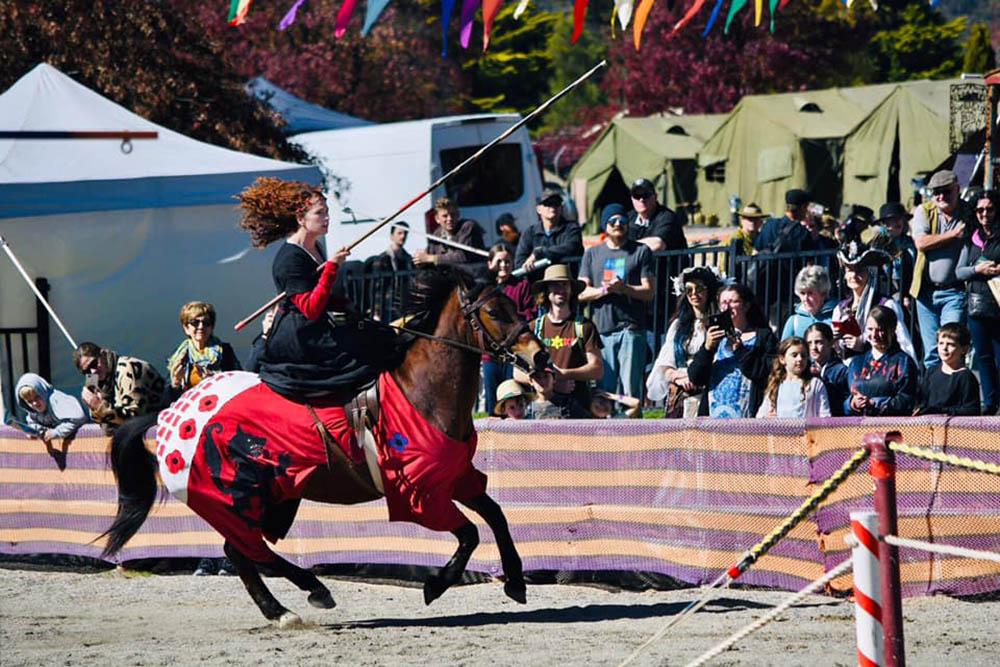

ARMOUR UP!
One of the biggest components of jousting is the equipment used by both horse and rider. Crowds at tournaments are greeted with the sight of a fully armoured knight and horse dressed in medieval attire, however, even today it is first and foremost for protection over spectacle. Tony and Elizabeth have had suits of armour made by expert craftsmen weighing up to 50 kilograms that provide a realistic experience of what knights hundreds of years ago would have felt.
“You lose probably 80-90 per cent of all your senses because your vision is restricted,” explains Tony. “I liken it to having your head in a mailbox. You can’t see anything below the horse’s ears. And you probably lose half your hearing, so you’re totally reliant on feel – the feel of what’s happening underneath you. A lot of it is using your legs too because you’re down to one hand. And when you’re in armour, you don’t have a great deal of movement. You probably lose at least 50 per cent of the ability to move your body.”
Being an incredibly demanding and sometimes violent sport, it’s not unusual for Tony and Elizabeth to be comparing bruises after a few passes. “It can take quite a toll on your body,” says Elizabeth. “Under my arms will often be sore from the armour itself. During Covid, we didn’t have any opportunities to joust, and after 18 months off it’s been another learning curve remembering how heavy the armour is and how restrictive it can be.

“My armour weighs around 30 kilograms. In my mind, it’s a sport that you need to make a commitment to, and you need to maintain your fitness. Armour doesn’t stretch, so if you have your armour built to your body, you have to work towards staying in that shape. After Covid, we had a little work to do on that ourselves. You have to learn to work with the armour because it doesn’t give. I remember I once vacuumed in it just so I could get used to the feeling of moving normally before throwing in the riding element too.”
Each jouster wears their own coat of arms that has a personal significance. Tony and Elizabeth have both drawn from their family histories and personal beliefs to create their own heraldry. “It’s not just riding for me, it’s riding for a cause, for a reason,” says Elizabeth. “I do equine therapy with my Walers and I started out working with veterans. So, my heraldry is three poppies to represent veterans past, present, and future. And then also the black dog, which is a symbol for depression, and I like to think that when I get hit, it’s the black dog that’s taking the blow.”
Tony has his own approach. “I put my heraldry together with significant facts from my family tree,” he says. “I’ve got heritage in Holland, so I’ve taken the lion off the Dutch coat of arms. And there’s a crescent moon which symbolises my love for my two sons.”
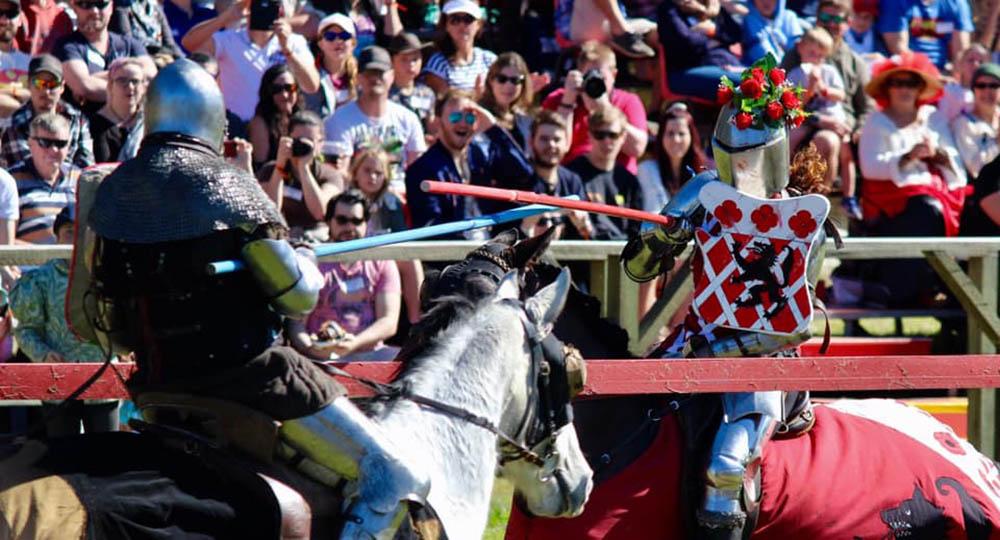
YOU, FETCH MY HORSE!
The other vital part of succeeding in one’s dreams of being a jouster is having a good horse by your side. And just as with every discipline, some horses will thrive as a jousting mount while others will prefer to watch from the sidelines.
“Gunner, the mare I rode in tournaments when I first met Liz, is by far the most outstanding jousting horse I’ve ever ridden,” says Tony. “She just loved it with a passion. I never had to worry about what she was doing underneath me. She was just a machine. She was originally wild and Liz got her through the Waler programme at Equitana. We’ve travelled overseas, and we travel a lot up and down the east coast. One year I rode about eight different horses at different tournaments — and horses that I’d borrowed so not necessarily horses that are used to jousting, so you’ve got to be able to rely on your own ability.”
“The first thing you need to check is that your horse is okay literally running at another horse,” explains Elizabeth. “Like with any discipline, some will do it well and others won’t. For me, it’s all about building that connection and trust with our horses so that when I ask them to go, they’ll go. I like to think that some of mine would jump through fire for me. They can trust that you’ll look after them. It’s really important to me that I put my horses first and keep them safe as much as possible. Some of them get really excited and love heading into the tilts for the joust, and when you pick up that lance they are rearing to go. And that can be amazing because they just carry you with them and the feeling is so powerful.”

“For us, it’s so important that the horses are safe and comfortable. We have head protection for the horses. They wear bug eyes and covers over parts of their face,” says Elizabeth.
“Plenty of things can go wrong and people do get hurt,” says Tony. “The most important thing is having suitable armour to do the level of jousting that you want to do. Our horses are trained no different to a high-level dressage or showjumping horse. It is unnatural for horses to gallop at each other so there is a lot of training involved. Our number one rule is never, ever hit a horse. Occasionally when you break a lance, a piece of timber might bounce off them, but that’s why we use protective equipment. If I ever accidentally hit a horse directly, I think I’d retire on the spot.”
“The hardest part about new people coming into the sport is that there is a lot of re-enactors that want to learn how to joust,” says Tony. “Unfortunately, we don’t have a lot of horse riders that want to learn how to joust. So the hardest part is teaching somebody to ride. A lot of people have done foot combat or something like that so have got armour but couldn’t ride a gate on a windy day. It takes a little bit of time to try and train people to ride. Because riding is foreign to them, jousting is even worse.”
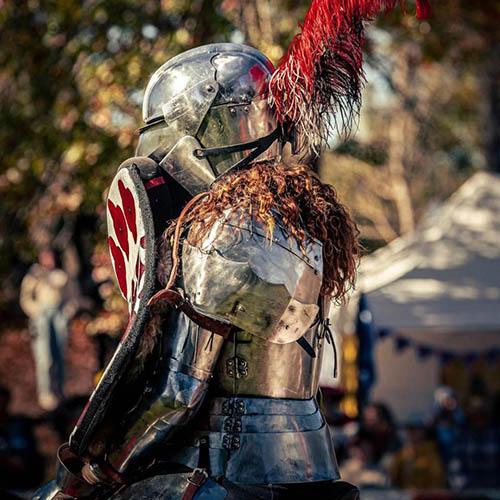
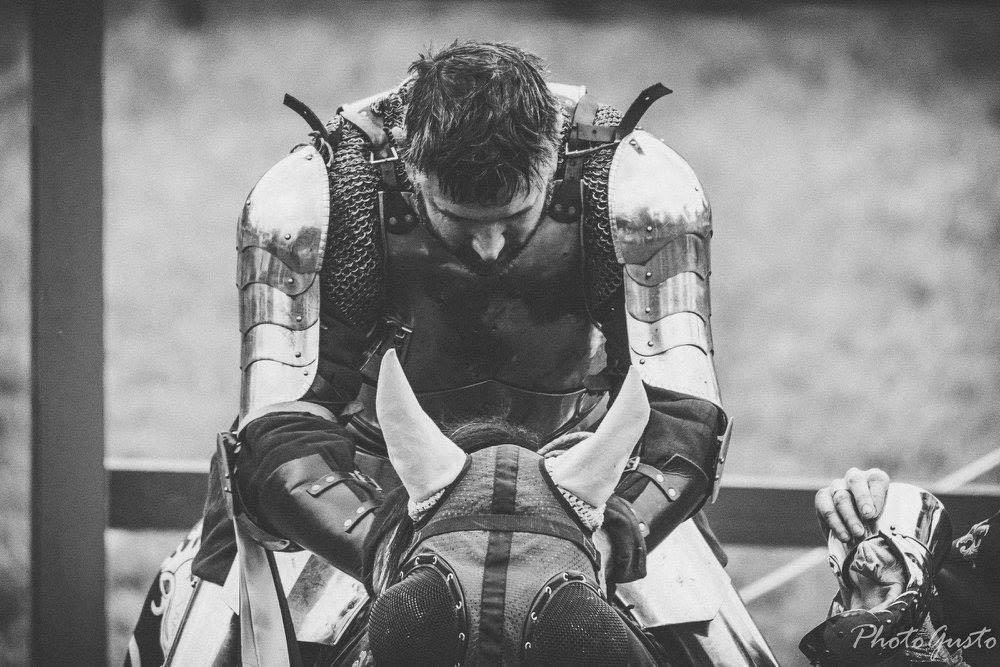
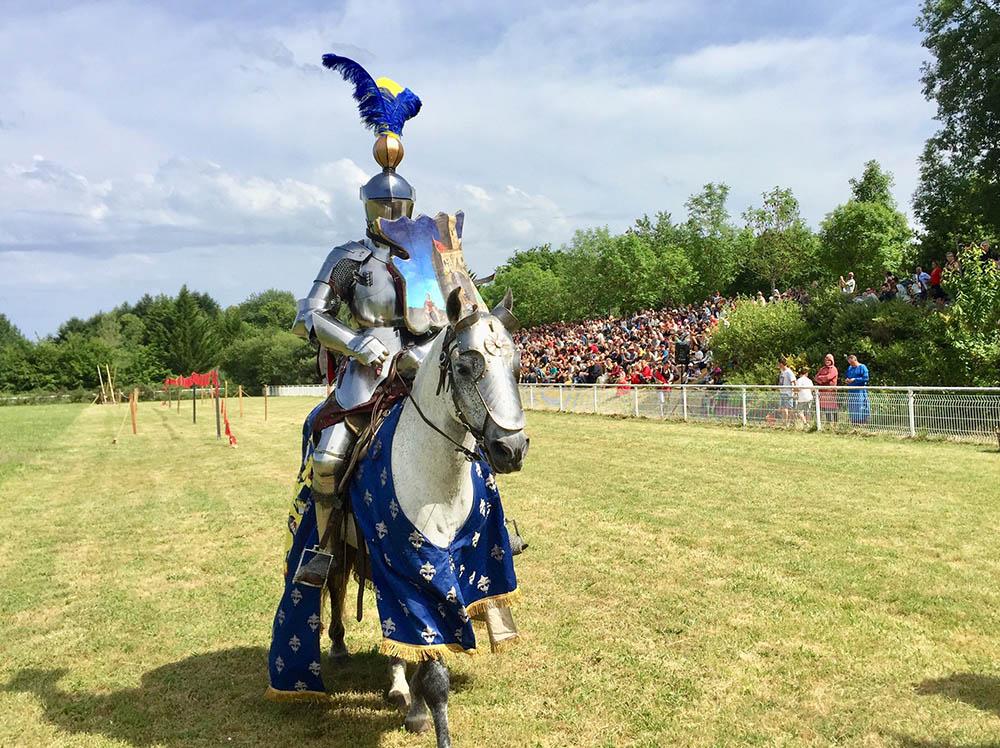
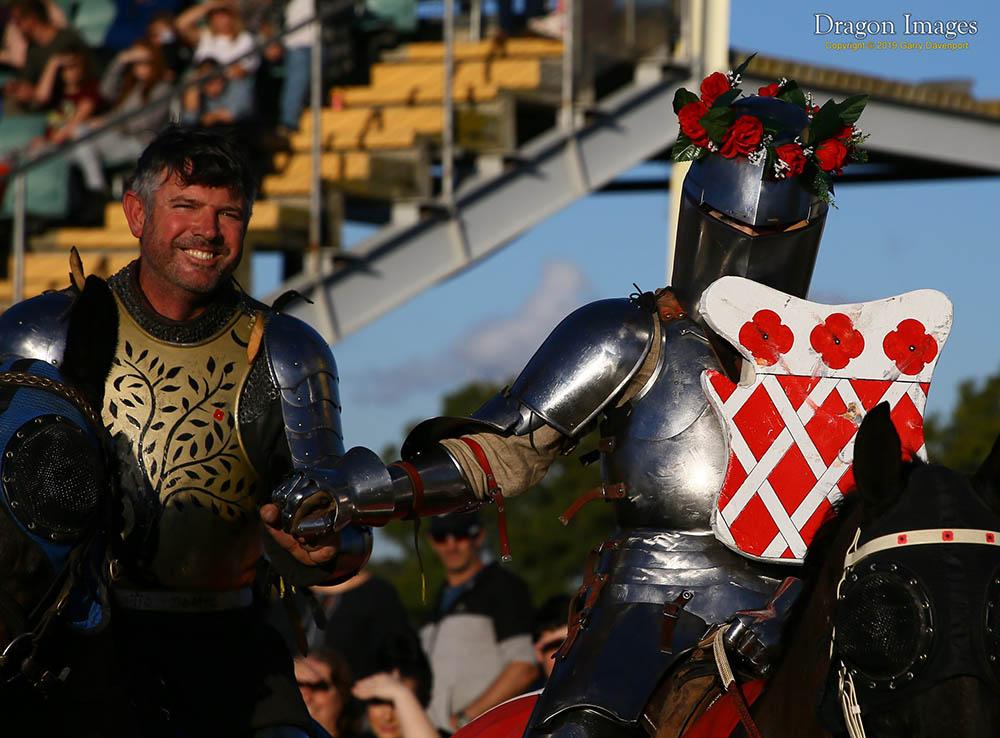
THREE STYLES OF JOUSTING
Within the jousting world, there are three distinct styles all with their own lances, scoring systems, and purposes. “The most common is what we call Balsa jousting,” explains Tony. “We use a balsa wood lance tip, which is about a metre long. You can break it over your knee pretty easily, but it takes a fair bit to compress it laterally. But you still cop a fairly big punch.
“Then you’ve got American Solids, which is basically gridiron with sticks. It’s pretty full-on. That’s probably the hardest I’ve ever been hit and it’s an amazing feeling that adrenaline rush. If you’re a competitive person, it’s like the harder you get hit, the harder you want to go back.
“And then we have Historical Solids, which is purely based on historical accuracy. We use more of a tapered lance with a steel coronel on the end, so it’s like a three-pronged spear. When you hit the target, it actually locks on to it. You are either going to break a lance, unhorse the other rider, unhorse yourself, or both. All three have got a different feeling on impact.
“With Balsa jousting, you typically get one point for a touch, if your lance breaks you might get two points; if your lance shatters with two or more fractures in the lance you’ll get three points, and some tournaments will score five points if you unhorse someone. The target zone is basically from the belly button to the shoulder. Some tournaments will also score headshots. You are frowned upon if you try to duck or try and deflect. The American Solids is totally different. You either break or you unhorse. And then in Historical, you will score for a touch, and for breaking the lance you’ll score better the higher up the break, because it’s tapered.”
FOR HONOUR, MY LIEGE
When Tony turned up on Elizabeth’s doorstep, he was genuinely serious about being a knight despite what she may have initially thought. “I wasn’t knighted by the Queen but, within the jousting community, I was knighted by a herald who we know as Lord Stephen who was knighted by somebody in the UK,” explains Tony. “We had a whole ceremony and I got slapped [with a gauntlet] and had to agree to live by a code of ethics. It’s not everybody who gets that title. There are a lot of people who joust that still haven’t been knighted.
“For me, the honour that comes with being a knight is very important, as well as my heraldry. There’s a code that we all go by. Chivalry is a big thing and we’re very strict on the way we treat others. It’s a funny sport. We’re all very close throughout the day and then when we pick up the lance, it’s game on and we tried to knock each other off. But as soon as you’ve done that individual pass, you always stop at the other end to make sure everything is okay. And then you can try and knock each other off again.
“I’m fairly humble about all of it but I’ve pretty much won every Balsa tournament in Australia at least once,” says Tony. “I’m one of four in the world that has done all three styles. There are three Australians, including myself, and a guy from France. I’ve been lucky enough to ride in tournaments in France, in the shadows of two 14th century castles, and the feeling of that was just incredible. To be able to do it in such a historically significant place was just mind-blowing.” EQ
YOU MIGHT ALSO LIKE TO READ:
‘You Ask, Who Is Lynda de Gruchy?’ – Roger Fitzhardinge (Equestrian Life, July 2021)





